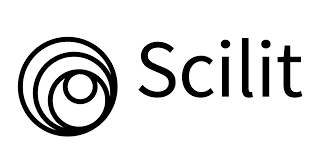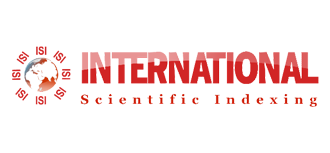Abstract
Green synthesis of selenium nanoparticles (Se-NPs) harnesses plant resources to enhance therapeutic efficacy sustainably. Selenium nanoparticles (Se-NPs) are known for their antioxidant, anti-inflammatory, and antidiabetic properties, making them promising candidates for addressing oxidative stress-related disorders. This study investigates the synthesis, characterization, and biological activities of Se-NPs derived from Nigella sativa seed extracts. MnSelenium nanoparticles were synthesized using Nigella sativa seed extract as a reducing and stabilizing agent. Characterization techniques such as UV-Visible spectroscopy, Fourier-transform infrared spectroscopy (FTIR), scanning electron microscopy (SEM), and energy-dispersive X-ray spectroscopy (EDS) were employed. The in-vitro biological activities of the Se-NPs, including antioxidant (DPPH and ABTS scavenging), anti-inflammatory (membrane stabilization and protein denaturation inhibition), and antidiabetic (alpha-amylase and alpha-glucosidase inhibition) effects, were evaluated and compared with standard drugs. Results obtained from this study revealed that Se-NPs exhibited a distinct absorption peak at 310 nm in UV-Visible spectroscopy, confirming successful synthesis. FTIR analysis identified functional groups responsible for stabilization, while SEM revealed spherical nanoparticles with an average size of 45-60 nm. Compared to crude Nigella sativa extracts, Se-NPs demonstrated significantly enhanced biological activities. The antioxidant scavenging activities of Se-NPs were comparable to ascorbic acid, with DPPH (85.2%) and ABTS (88.3%) scavenging efficiencies. Anti-inflammatory activities showed improvements in membrane stabilization (80.5%) and protein denaturation inhibition (77.4%), nearing the efficacy of aspirin. Additionally, Se-NPs exhibited potent antidiabetic activities, with alpha-amylase (75.8%) and alpha-glucosidase (78.2%) inhibition, similar to acarbose. Selenium nanoparticles synthesized from Nigella sativa enhanced antioxidant, anti-inflammatory, and antidiabetic activities, highlighting their therapeutic potential. These findings bridge traditional herbal medicine and nanotechnology, offering a promising pathway for sustainable interventions against chronic diseases. Future in-vivo studies and clinical trials are recommended to validate these promising results.
Keywords: Selenium nanoparticles (Se-NPs); Nigella sativa; Green synthesis; Antioxidants; Antidiabetic properties; Anti-inflammatory properties; Fourier-transform infrared spectroscopy; Renal Protective; Immunomodulatory; Analgesic; Antimicrobial; Anthelmintics; Analgesics; Anti-Inflammatory; Spasmolytic; Bronchodilator; Gastroprotective; Hepatoprotective; Renal Protective
Introduction
Green synthesis of nanoparticles, employing natural resources such as plant extracts, is increasingly recognized for its ecofriendliness and potential to harness the bioactive compounds intrinsic to plants. Selenium nanoparticles (Se-NPs) specifically, offers novel therapeutic applications in oxidative stress-related diseases. Among various nanomaterials, selenium nanoparticles (Se-NPs) have garnered significant attention due to their unique physicochemical properties and therapeutic potential [1]. The synthesis of Se-NPs through green methodologies has emerged as a promising avenue to enhance biocompatibility and therapeutic efficacy while minimizing toxicity concerns. Selenium plays a critical role as a trace element in human health, known for its antioxidant activity, immune modulation, and protective effects against oxidative stress-related diseases such as diabetes and inflammation [2]. Recent studies on green-synthesized nanoparticles highlight their superior therapeutic potential compared to their chemical counterparts. For example, research on Ackee (Blighia sapida) selenium nanoparticles has demonstrated improved bioactivity, suggesting the transformative role of plantderived nanoparticles in medical applications [3].
Nigella sativa (N. sativa) (Family Ranunculaceae) is emerging as a miracle herb with a rich historical and religious background since many researches revealed its wide spectrum of pharmacological potential. N. sativa is commonly known as black seed. N. sativa is native to Southern Europe, North Africa and Southwest Asia and it is cultivated in many countries in the world like Middle Eastern Mediterranean region, South Europe, India, Pakistan, Syria, Turkey, Saudi Arabia [4]. The seeds of N. sativa and their oil have been widely used for centuries in the treatment of various ailments throughout the world. And it is an important drug in the Indian traditional system of medicine like Unani and Ayurveda [5]. Among Muslims, it is considered as one of the greatest forms of healing medicine available due to it was mentioned that black seed is the remedy for all diseases except death in one of the Prophetic hadith [6]. N. sativa has been extensively studied for its biological activities and therapeutic potential and shown to possess wide spectrum of activities viz. as diuretic, antihypertensive, antidiabetic, anticancer and immunomodulatory, analgesic, antimicrobial, anthelmintics, analgesics and anti-inflammatory, spasmolytic, bronchodilator, gastroprotective, hepatoprotective, renal protective and antioxidant properties [7,8]. The seeds of N. sativa are widely used in the treatment of various diseases like bronchitis, asthma, diarrhea, rheumatism and skin disorders. It is also used as liver tonic, digestive, anti-diarrheal, appetite stimulant, emmenagogue, to increase milk production in nursing mothers to fight parasitic infections, and to support immune system [9,10].
This research is motivated by the growing need for alternative therapies that utilize natural and sustainable resources while addressing pressing health concerns such as diabetes and chronic inflammation. Comprehensively characterizing and assessing the biological activities of Nigella sativa derived selenium nanoparticles, this work aims to contribute valuable insights to the fields of nanotechnology and pharmacology. Also, it seeks to bridge the gap between traditional knowledge and cutting-edge biomedical applications, fostering innovative approaches to combat modern health challenges.
Materials and Methods
Chemicals and Reagents
Sodium selenite (Na₂SeO₃), methanol, ethanol, potassium permanganate, sodium hydroxide, and phosphate buffer were purchased from Sigma-Aldrich (USA). All chemicals used for this study were of analytical grade. Distilled water was used for the preparation of all solutions.
Plant Material Collection and Preparation
Nigella sativa seeds were obtained from a local supplier in Lagos and authenticated at the Department of Biological Science, University of Lagos, Nigeria. The seeds were thoroughly washed, air-dried, and ground into a fine powder using an electric grinder. The powdered material was stored in an airtight container for further use.
Methanolic Extract of Nigella sativa seeds
Methanolic extraction was performed by soaking 50 g of Nigella sativa seed powder in 500 mL of methanol for 72 hours with occasional stirring. The mixture was filtered using Whatman No. 1 filter paper, and the filtrate was concentrated using a rotary evaporator at 40°C under reduced pressure. The concentrated extract was stored at 4°C until further use.
Synthesis of Selenium Nanoparticles (Se-NPs)
Selenium nanoparticles were synthesized using the green synthesis method described by Arowora et al. [11]. A 10 mM solution of sodium selenite was prepared in distilled water. Nigella sativa seed extract (10 mL) was added to 25 mL of the sodium selenite solution in a conical flask. The reaction mixture was heated at 60°C for 2 hours under continuous stirring. The formation of selenium nanoparticles was indicated by a change in colour to reddish-brown. The nanoparticles were collected by centrifugation at 10,000 rpm for 20 minutes, washed three times with distilled water, and air-dried.
Characterization of Selenium Nanoparticles UV-Visible Spectroscopy
The optical properties of the synthesized nanoparticles were assessed using a UV-Visible spectrophotometer. Absorbance spectra were recorded in the wavelength range of 200–600 nm. The UV-Visible spectral range of 200–600 nm was chosen to encompass the characteristic absorption region of selenium nanoparticles, typically observed around 300–400 nm, as well as to detect the bioactive compounds present in Nigella sativa extracts that contribute to nanoparticle stabilization. Additionally, this range aids in identifying any potential aggregation or impurities, ensuring the quality and consistency of the synthesized nanoparticles [12].
Fourier Transform Infrared (FTIR) Spectroscopy
FTIR analysis was performed according to the method described by Arowora et al. [11]. The analysis was carried out to identify the functional groups responsible for stabilizing the nanoparticles. Spectra were recorded within the range of 400- 4000 cm-1.
Scanning Electron Microscopy (SEM)
SEM was employed to examine the morphology and size of the nanoparticles.
Energy Dispersive X-Ray Spectroscopy (EDS)
EDS analysis was carried out to confirm the elemental composition of the selenium nanoparticles.
Determination of Antioxidant Activity of Selenium Nanoparticles DPPH Radical Scavenging Assay
The ability of the Se-NPs to scavenge DPPH radicals was determined spectrophotometrically by measuring the reduction in absorbance.
ABTS Assay
The ABTS radical scavenging activity was assessed by measuring the reduction in absorbance at 734 nm, indicating the capacity of the nanoparticles to neutralize ABTS radicals.
Anti-inflammatory Assay Membrane Stabilization Test
The Se-NPs’ ability to stabilize red blood cell membranes was evaluated using a heat-induced haemolysis model, which assesses the extent of membrane protection.
Protein Denaturation Assay
The inhibition of protein denaturation by Se-NPs was tested to assess their potential anti-inflammatory effects, focusing on their ability to prevent protein structural changes.
Antidiabetic Activity Alpha-Amylase Inhibition Assay
The inhibitory effect of Se-NPs on alpha-amylase enzyme activity was quantified to assess their potential in reducing carbohydrate digestion.
Alpha-Glucosidase Inhibition Assay
The ability of Se-NPs to inhibit alpha-glucosidase enzyme activity was evaluated using standard protocols to investigate their potential in managing postprandial hyperglycaemia.
Statistical Analysis
All experiments were conducted in triplicate, and results were expressed as mean ± standard deviation (SD). Statistical significance was determined using one-way ANOVA followed by Tukey’s post hoc test. A p-value ≤ 0.05 was considered statistically significant.
Results
Synthesis and Characterization of Selenium Nanoparticles (Se-NPs)
The green synthesis of selenium nanoparticles using Nigella sativa seed extract was confirmed through visible colour changes in the reaction mixture from yellow to reddish-brown, indicating the formation of Se-NPs. Characterization data obtained are as follows:
UV-Visible Spectroscopy revealed a sharp absorbance peak was observed at 310 nm, consistent with selenium nanoparticles, confirming their successful synthesis. For Fourier Transform Infrared (FTIR) Spectroscopy, FTIR spectra revealed the presence of functional groups such as hydroxyl (-OH) at 3410 cm-1, amide (-NH) at 1650 cm-1, and selenium-oxygen (Se-O) stretching at 780 cm-1, indicating the role of bioactive compounds in nanoparticle stabilization.
For Scanning Electron Microscopy (SEM), SEM images showed Se-NPs to be spherical, with an average particle size of 45-60 nm. Aggregation of particles was minimal due to the stabilizing effect of phytochemicals. For Energy Dispersive X-Ray Spectroscopy (EDS), selenium was confirmed as the predominant element, with an atomic percentage of 82%, verifying the purity of the nanoparticles.
Comparative Determination of the Antioxidant Activity of Nigella sativa Seed Extract and Selenium Nanoparticles (Se-NPs)
The antioxidant potential of Se-NPs was evaluated using DPPH and ABTS assays. (Table 1), (Figure1) present the percentage DPPH-scavenging activity of Se-NPs compared to Nigella sativa seed extract and ascorbic acid which served as the control. Se-NPs exhibited significantly higher DPPH-scavenging activity (85.2 ± 2.0) compared to Nigella sativa seed extract (65.4 ± 1.2), indicating enhanced antioxidant potential of Selenium nanoparticles due to nanoscale modifications. Ascorbic acid which served as the control revealed the highest percentage (90.5 ± 1.5) of DPPH-scavenging activity compared to Selenium nanoparticles and Nigella sativa seed extract.


Table 1 and Figure 1 also revealed the percentage ABTSscavenging activity of Se-NPs, Nigella sativa seed extract and ascorbic acid which served as the control. It was observed that Ascorbic acid had the highest percentage (93.2 ± 1.6) ABTSscavenging activity compared to Se-NPs and Nigella sativa seed extract. Se-NPs however, exhibited higher percentage (88.3 ± 2.3) of ABTS-scavenging activity than Nigella sativa seed extract (70.1 ± 1.8).
Comparative Determination of the Anti-inflammatory Activity of Nigella sativa Seed Extract and Selenium Nanoparticles (Se-NPs)


The anti-inflammatory activity of Nigella sativa seed extract and Selenium nanoparticles were determined using membrane stabilization and protein denaturation inhibition assays. The results are summarized in (Table 2) and (Figure 2) below. It was observed that aspirin which served as the control showed the highest percentage (85.7 ± 1.9) of membrane stabilization compared to Nigella sativa seed extract and Selenium nanoparticles. However, Selenium nanoparticles revealed a higher percentage (80.5 ± 2.2) membrane stabilization compared to Nigella sativa seed extract (61.3 ± 1.8). Protein denaturation inhibition assay revealed that aspirin which served as the control (standard drug) had the highest percentage protein denaturation inhibition assay (83.5 ± 1.7) compared to Nigella sativa seed extract and Selenium nanoparticles. Meanwhile, the percentage protein denaturation inhibition of Selenium nanoparticles was higher (77.4 ± 2.0) than that of Nigella sativa seed extract (58.9 ± 1.5).


Comparative Determination of the Antidiabetic Activity of Nigella sativa Seed Extract and Selenium Nanoparticles (Se-NPs)
The antidiabetic properties of Nigella sativa seed extract and Se-NPs were assessed through alpha-amylase and alphaglucosidase inhibition assays. The results are provided in (Table 3) and (Figure 3) shown below. It was observed that acarbose which served as the control showed the highest percentage (89.5 ± 1.8) of alpha-amylase inhibition compared to Nigella sativa seed extract and Selenium nanoparticles. However, Selenium nanoparticles revealed a higher percentage (75.8 ± 2.1) membrane stabilization compared to Nigella sativa seed extract (57.6 ± 1.6). Alphaglucosidase inhibition assay revealed that acarbose which served as the control had the highest percentage alpha-glucosidase inhibition (90.3 ± 2.0) compared to Nigella sativa seed extract and Selenium nanoparticles. Meanwhile, the percentage alphaglucosidase inhibition of Selenium nanoparticles was higher (78.2 ± 2.4) than that of Nigella sativa seed extract (62.4 ± 1.5).
Discussion
Green synthesis of nanoparticles, employing natural resources such as plant extracts, is increasingly recognized for its ecofriendliness and potential to harness the bioactive compounds intrinsic to plants. Selenium nanoparticles (Se-NPs) specifically, offers novel therapeutic applications in oxidative stress-related diseases. Among various nanomaterials, selenium nanoparticles (Se-NPs) have garnered significant attention due to their unique physicochemical properties and therapeutic potential [1]. The present study highlights the synthesis and evaluation of selenium nanoparticles (Se-NPs) derived from Nigella sativa seed extracts, focusing on their antioxidant, anti-inflammatory, and antidiabetic potentials. The antioxidant activities of Se-NPs demonstrated significantly higher DPPH and ABTS radical scavenging activity compared to Nigella sativa seed extracts, as observed in our study. These results are in agreement with a study on Se-NPs synthesized using Ackee leaves and arils, which reported enhanced radical scavenging activity of Se-NPs compared to their crude extracts. Similarly, Fesharaki et al. [13] found that biosynthesized Se-NPs exhibited increased scavenging activity compared to traditional selenium compounds, further supporting our findings. In terms of anti-inflammatory activities, Se-NPs exhibited significantly higher membrane stabilization and protein denaturation inhibition than crude Nigella sativa seed extracts. This aligns with findings from studies on green-synthesized Se-NPs, such as those derived from Ackee, where superior membrane stabilization and haemolysis inhibition were observed compared to standard antiinflammatory drugs like aspirin [3].
The Se-NPs in this study demonstrated significant alphaamylase and alpha-glucosidase inhibitory activities, comparable to standard drugs such as acarbose. Similar results have been reported by other studies, such as those on Se-NPs synthesized using Ackee extracts, which exhibited dose-dependent enzyme inhibition activities [14-16]. Furthermore, these findings are supported by studies on plant-based nanoparticles, which show that the nanoscale properties enhance the bioavailability and efficacy of antidiabetic agents. The UV-visible spectra of Se-NPs in this study showed a peak at 310 nm, indicative of successful synthesis. This result aligns with studies on Se-NPs synthesized using Allium sativum and other plant extracts, which report similar spectral characteristics. Additionally, SEM and FTIR analyses confirmed the spherical morphology and functional group interactions stabilizing the nanoparticles, consistent with reports on green-synthesized Se-NPs [17,18]. The results demonstrate that green-synthesized Se-NPs possess enhanced biological activities compared to their source extracts, attributed to their nanoscale properties. These advantages include Higher surface-to-volume ratio, which leads to increased interaction with reactive species and improved cellular uptake and bioavailability. These benefits underscore the potential of Se-NPs in addressing oxidative stress, inflammation, and diabetes, as highlighted in related studies. This study, along with related research, emphasizes the need for sustainable, plant-based nanotechnology approaches. Future work should focus on in-vivo studies and cytotoxicity assessments to confirm the safety and therapeutic efficacy of Se-NPs in clinical applications.
Conclusion
This study demonstrates the successful green synthesis of selenium nanoparticles (Se-NPs) using Nigella sativa seed extracts and their potential therapeutic applications. The Se-NPs exhibited significantly enhanced antioxidant, anti-inflammatory, and antidiabetic activities compared to the crude seed extracts, showcasing the transformative effects of nanoscale modifications. Notable findings include improved antioxidant activities, with DPPH and ABTS radical scavenging efficiencies approaching those of ascorbic acid; superior anti-inflammatory effects, including membrane stabilization and protein denaturation inhibition, comparable to standard drugs like aspirin; and significant antidiabetic activities, evidenced by alpha-amylase and alpha-glucosidase inhibition, similar to the performance of acarbose. These results align with recent advances in green nanotechnology, highlighting the potential of utilizing Nigella sativum and other plant resources for eco-friendly nanoparticle synthesis. Future directions include in-vivo studies to validate the in-vitro findings and assess bioavailability, pharmacokinetics, and safety of Se-NPs, cytotoxicity assessments to ensure their safety for therapeutic use, and clinical trials to explore the efficacy of Se-NPs in managing oxidative stress, inflammation, and diabetes in humans. This work bridges traditional herbal medicine with modern nanotechnology, paving the way for sustainable and effective therapeutic interventions. The wide therapeutic window, biocompatibility, and enhanced efficacy of Se-NPs position them as promising candidates for treating chronic diseases.
Acknowledgments
We want to thank all the researchers who contributed to the success of this research work.
Conflict of interest
The authors declared that there are no conflicts of interest.
Funding
No funding was received for this research work.
References
- Ahmeda M, et al. (2022) Characterization and biological activities of selenium nanoparticles synthesized from plant extracts. Materials Science and Engineering C.
- Shah R (2023) UV-Visible characterization and antioxidant potential of selenium nanoparticles synthesized via green methods. Nanomedicine.
- Ibrahim O, Olubukola Helen Oyeniran, Oluwatobiloba Moses Ogundipe, Eunice Oluwabukunmi Abe, Temitope Adenike Oyedepo, et al. (2024) Photo-physical characterization and therapeutic potential of selenium nanoparticles synthesized using Ackee plant parts. BMC Complementary Medicine and Therapies.
- Khare CP (2004) Encyclopedia of Indian medicinal plants. New York: Springes-Verlag Berlin Heidelberg.
- Sharma PC, Yelne MB, Dennis TJ (2005) Database on medicinal plants used in Ayurveda. New Delhi: pp. 420-440.
- Al-Bukhari MI (1976) In: The collection of authentic sayings of prophet mohammad (peace be upon him), division 71 on medicine. 2nd ed. Al-Bukhari Sahi, editor. Ankara: Hilal Yayinlari.
- Ayo VI, Adondua MA, Morayo AE, Ekele JU, Amilo D, et al. (2023) Effect of Lactuca sativa supplemented diet on Poloxamer 407 induced hyperlipidemic albino rats (Rattus norvegicus). Asian J Nat Prod Biochem 21(2): 67-78.
- Joseph, Ikwebe, Moses Adondua Abah (2023) Haematological Changes in Male Albino Rats Administered Silver Nanoparticles. Asian Journal of Research in Biosciences 1(5): 13-20.
- Goreja WG (2003) Black seed: nature's miracle remedy. New York, NY: Amazing Herbs Press.
- Abel-Salam BK (2012) Immunomodulatory effects of black seeds and garlic on alloxan-induced diabetes in albino rat. Allergol Immunopathol 40(6): 336-340.
- Arowora KA, Ugwuoke KC, Abah MA, Ugwoke BC (2023) Effects of green-synthesized silver nanoparticles from Azadirachtaindica on growth performance and liver function parameters in male albino rats. Cell Biol Dev 7: 28-34
- Arowora K, Ugwuoke K, Abah M, Dauda A, Ruyati S (2024) Evaluation of Serum Biochemical Parameters in Male Wistar Rats Administered with Azadirachta Indica Silver Nanoparticles. Asian Journal of Science Technology Engineering and Art 2(3): 462-475.
- Fesharaki PJ (2023) Antioxidant and anti-inflammatory properties of selenium nanoparticles synthesized from plant extracts. International Journal of Nanomedicine.
- Asha R, Hande M P, Mun G L, Valiyavettil S (2009) Cytotoxicity and Genotoxicity of silver nanoparticle in human cells. American Chemistry Society of Nanopartice 3(2): 279-290.
- Iravani S (2022) Phytochemicals as reducing and stabilizing agents in green synthesis of metal nanoparticles. Green Chemistry Letters and Reviews.
- Iravani S, Varma RS (2023) Green synthesis, biocompatibility, and applications of metal nanoparticles. Advances in Colloid and Interface Science.
- Kokila S (2021) Green synthesis of selenium nanoparticles from Diospyros montana leaf extracts and their antimicrobial and antioxidant activities. Green Chemistry Letters and Reviews.
- Fesharaki P J (2024) Green synthesis of selenium nanoparticles and their therapeutic potential in oxidative stress-related diseases. Journal of Nanobiotechnology.






























